Think all unhealthy foods deserve a spot on the banned list? Think again. While some indulgences have earned their bad reputation, others aren’t as evil as they seem—if you know how to enjoy them in moderation. From creamy cheeses to the occasional burger, a few favorites can still fit into a balanced lifestyle. But not all treats are created equal. Some processed picks are simply too harmful to keep around. In this guide, we’re breaking down the 11 “unhealthy” foods you don’t actually have to give up—and 11 that you should ditch from your diet ASAP.
1. Dark Chocolate

Packed with antioxidants that fight inflammation, dark chocolate offers real health perks when you choose wisely. The higher the cocoa percentage, the more benefits and less sugar you’ll get. Keep portions small—just a square or two satisfies a sweet craving without calorie overload.
The rich flavor means you need less to feel satisfied compared to milk chocolate varieties. For maximum benefits, look for bars with at least 70% cocoa content and minimal added ingredients. Your heart and brain will thank you for this occasional indulgence that actually contributes to your wellness goals.
2. Popcorn

Naturally whole grain and surprisingly nutritious, air-popped popcorn delivers fiber that keeps you feeling full longer than many snacks. A three-cup serving contains just 100 calories when prepared without oil or butter. Skip the movie theater version drowning in artificial butter and salt. Instead, make your own at home using an air popper or a brown paper bag in the microwave. Season lightly with olive oil spray and a sprinkle of nutritional yeast or herbs for flavor without the calorie bomb. This simple swap transforms popcorn from junk food to a smart snacking choice you can enjoy regularly.
3. Cheese

Calcium-rich and satisfying, cheese provides essential nutrients your body needs in a delicious package. Just a small amount adds tremendous flavor to meals while delivering protein that helps build and maintain muscle. The key is portion control—stick to a piece about the size of your thumb or a couple of thin slices.
Choose stronger-flavored varieties like sharp cheddar or parmesan, as you’ll need less to satisfy your taste buds. Full-fat cheeses actually help you absorb fat-soluble vitamins better than their reduced-fat counterparts. Enjoy cheese thoughtfully as part of balanced meals rather than mindless snacking for maximum benefit.
4. Peanut Butter

Creamy, satisfying, and versatile, natural peanut butter delivers healthy fats that keep hunger at bay between meals. The plant protein helps maintain muscle mass while providing steady energy throughout your day. Reading labels matters here—choose versions with just peanuts and maybe salt. Skip anything with added sugars, oils or preservatives that undermine the natural benefits. Measuring matters too! Stick to 1-2 tablespoon portions since this nutrient-dense food packs about 190 calories per serving. Pair with apple slices or spread on whole grain toast for a nutritious combination that supports your health goals.
5. Eggs

Versatile and affordable, eggs contain nearly every nutrient your body needs packed into just 70 calories. The high-quality protein keeps hunger at bay while supporting muscle repair and immune function. Past concerns about cholesterol have largely been debunked by modern research. For most people, the cholesterol in eggs doesn’t significantly impact blood cholesterol levels. Prepare them boiled, poached, or scrambled with vegetables instead of fried in lots of butter. Including eggs several times weekly provides essential nutrients like choline that support brain health and development—making them a smart addition to most eating patterns.
6. Pasta

Carbohydrates get a bad rap, but whole grain pasta provides sustained energy and important nutrients your body needs. The fiber content helps with digestion and keeps blood sugar more stable than refined versions. Portion size makes all the difference—stick to about 1 cup cooked (roughly the size of your fist).
Fill half your plate with vegetables and add some lean protein to create a balanced meal. Try bean-based or whole wheat varieties for extra nutrition. The slightly nutty flavor works beautifully with robust sauces like pesto or tomato-based options. When enjoyed as part of a balanced meal rather than the main event, pasta fits perfectly into a healthy eating pattern.
7. Butter

Real butter contains fat-soluble vitamins that synthetic alternatives often lack. The rich flavor means a little goes a long way in making vegetables and whole grains more appealing and satisfying. Grass-fed varieties offer additional benefits with higher omega-3 fatty acids and conjugated linoleic acid. Keep portions small—about a teaspoon per serving is enough to enhance flavor without overloading on calories. Save butter for foods where you’ll really taste and appreciate it rather than cooking everything with it. For everyday cooking, olive oil remains a heart-healthier choice, but the occasional pat of butter on whole grain toast or steamed vegetables adds enjoyment to healthy foods.
8. Burgers

Fast food burgers loaded with cheese and special sauce spell trouble, but homemade versions can actually support your health goals. Starting with lean ground beef, turkey, or plant-based alternatives gives you control over fat content and quality. Load up with vegetables like lettuce, tomato, onions and avocado to boost nutrition.
Choose whole grain buns or try a lettuce wrap for a lower-carb option that still satisfies. Grilling or baking instead of frying reduces unhealthy fat. Make burger night an occasional treat rather than a regular habit, and you’ll enjoy this comfort food without compromising your wellness goals. Quality ingredients make all the difference!
9. French Fries
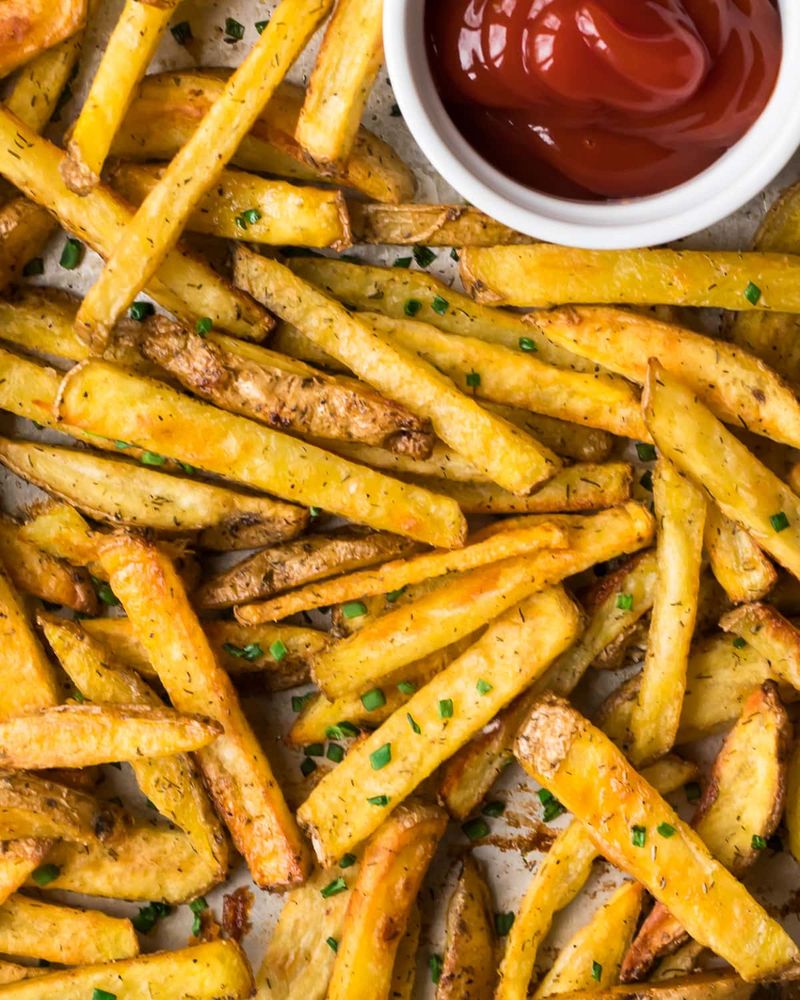
Golden and crispy, french fries don’t have to be off-limits when you change how they’re prepared. Oven-baking cuts the fat dramatically compared to deep-frying while preserving the satisfying texture we crave. Leaving the skin on adds fiber and nutrients often lost in processing. A light coating of olive oil and herbs before baking creates flavor without drowning potatoes in unhealthy fats. Keep portions reasonable—about the size of your fist—and pair with protein and vegetables for balance. This simple cooking method transformation turns an otherwise unhealthy food into an occasional treat that won’t derail your healthy eating goals.
10. Pizza

Friday night pizza can still happen when you make smarter choices about crust and toppings. Thin whole grain crust significantly reduces refined carbohydrates while adding fiber that keeps you satisfied longer. Load up on vegetable toppings instead of processed meats. Colorful bell peppers, mushrooms, spinach and onions add vitamins, minerals and antioxidants that benefit your body.
Use half the cheese or try stronger-flavored varieties like feta or goat cheese where smaller amounts deliver big flavor. Homemade versions let you control ingredients completely, but even when ordering out, these simple modifications transform pizza from nutritional disaster to reasonable indulgence.
11. Ice Cream

Quality trumps quantity when it comes to this frozen treat. Real ice cream made with simple ingredients like milk, cream, sugar and natural flavors satisfies more deeply than artificial alternatives. Stick to a half-cup serving (about the size of a tennis ball) to keep calories and sugar in check. Slow down and savor each spoonful mindfully instead of mindlessly eating from the container. Consider higher-fat varieties which often contain less sugar and feel more satisfying in smaller amounts. Adding fresh fruit provides natural sweetness and nutrition. When enjoyed occasionally as a true treat rather than a nightly habit, real ice cream can fit into a balanced approach to eating.
12. Sugary Breakfast Cereals
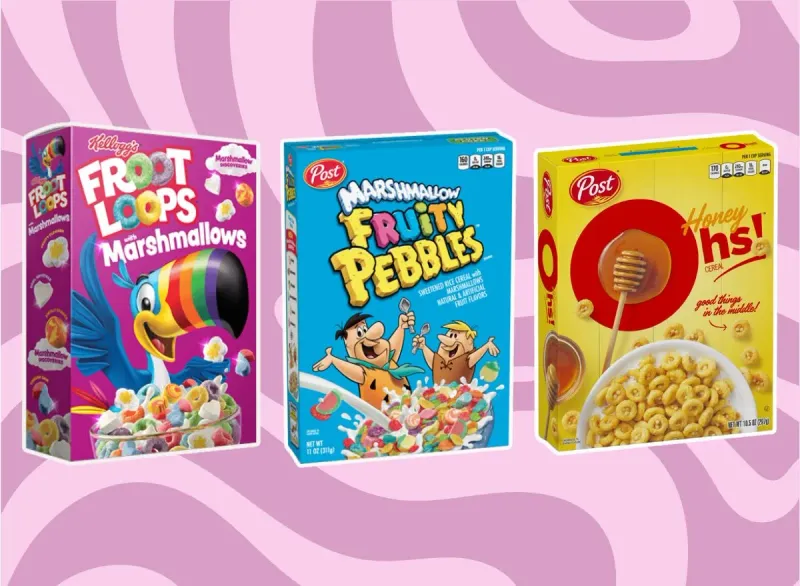
Colorful boxes featuring cartoon characters hide a nutritional nightmare inside. Many popular breakfast cereals contain more sugar per serving than desserts, setting you up for energy crashes and hunger pangs long before lunch. The minimal fiber does nothing to slow sugar absorption, leading to blood sugar spikes and increased cravings throughout the day.
Processing strips away nutrients, which manufacturers then artificially add back in—a poor substitute for naturally occurring vitamins and minerals. Children especially develop taste preferences from these ultra-sweetened products, making healthier options seem bland by comparison. Replace with whole grain options containing less than 6 grams of sugar per serving for a genuine nutritional upgrade to start your day.
13. Soda

Regular sodas deliver a staggering amount of sugar—about 10 teaspoons in a single can! This sugar overload contributes to insulin resistance, obesity, and chronic inflammation throughout your body. Diet versions aren’t better, as artificial sweeteners disrupt gut bacteria and may actually increase cravings for sweet foods. Both regular and diet sodas contain phosphoric acid that weakens tooth enamel and can leach calcium from bones over time. The temporary energy boost quickly turns into a crash, creating a cycle of cravings and consumption. Replace with sparkling water flavored with fresh fruit or herbs for a refreshing alternative that supports your health instead of undermining it.
14. Packaged Snack Cakes
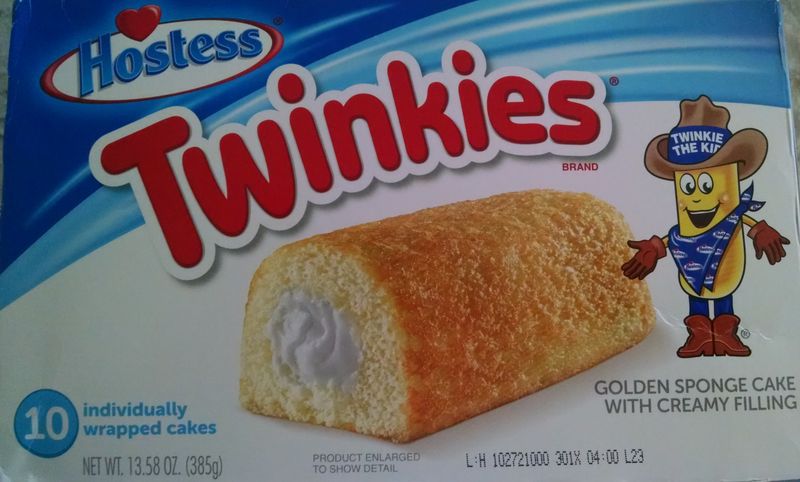
Those seemingly innocent snack cakes harbor a concerning chemical cocktail. The ingredient list reads like a science experiment, filled with artificial colors, flavors, and preservatives that extend shelf life but offer zero nutritional benefits. Trans fats hide under names like partially hydrogenated oils, increasing inflammation and heart disease risk.
The combination of refined flours and sugars creates a blood sugar rollercoaster that leaves you hungrier than before. Manufacturing processes destroy any nutrients that might have existed in the original ingredients. When cravings hit, try fresh fruit with a small handful of nuts or homemade baked goods using whole food ingredients for a satisfying alternative without the chemical aftermath.
15. Margarine

Originally marketed as heart-healthy, margarine’s reputation crumbled when science revealed the dangers of trans fats created during processing. These artificial fats increase harmful LDL cholesterol while simultaneously lowering beneficial HDL cholesterol—a double blow to heart health. The manufacturing process involves intensive industrial methods that turn liquid vegetable oils into spreadable substances through hydrogenation. This chemical alteration creates unnatural compounds your body struggles to process properly. Modern versions have improved but still contain questionable additives and artificial ingredients. Choose real butter in small amounts or heart-healthy olive oil instead. Sometimes natural foods with simple ingredient lists prove healthier than highly processed alternatives created in laboratories.
16. Processed Meats
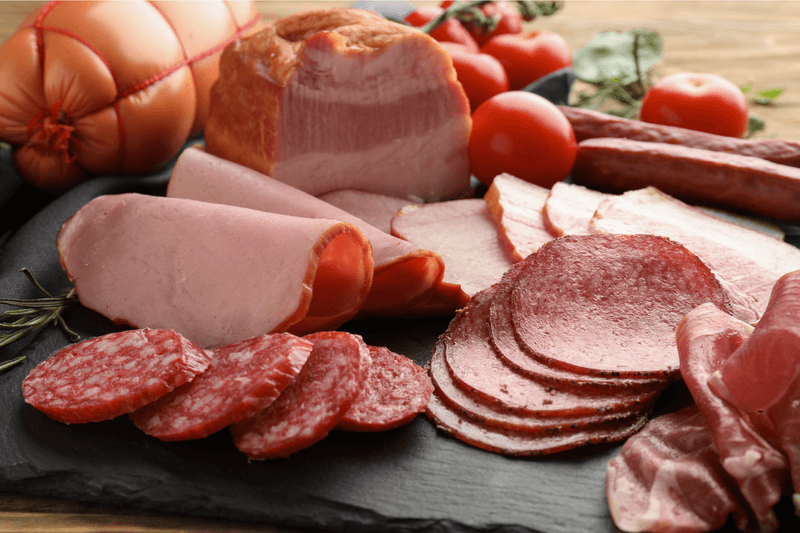
Bacon, hot dogs, salami and other processed meats offer convenience at a serious health cost. The World Health Organization classifies these products as Group 1 carcinogens—the same category as tobacco—based on strong evidence linking them to colorectal cancer. Preservation methods using nitrates and nitrites create compounds called nitrosamines when cooked at high temperatures.
These compounds damage cells and DNA, potentially initiating cancer development. Excessive sodium content contributes to high blood pressure and heart disease risk. Choose fresh, unprocessed meats instead, and treat them as side dishes rather than main events on your plate. This simple swap dramatically reduces your exposure to cancer-promoting compounds hiding in those convenient packages.
17. Flavored Coffee Creamers

Those colorful bottles promising to transform your coffee into dessert hide a troubling reality. Most flavored coffee creamers contain no actual cream—instead relying on vegetable oils, corn syrup, and artificial flavors to mimic the real thing. Trans fats lurk in many varieties, contributing to inflammation and heart disease risk.
A single tablespoon can contain more sugar than a cookie, and most people use several servings per cup. Artificial colors and flavors have been linked to behavioral issues and allergic reactions in sensitive individuals. Try unsweetened plant milks, a splash of real cream, or cinnamon and vanilla extract for flavor without the chemical cocktail that comes with commercial creamers.
18. Frozen Dinners
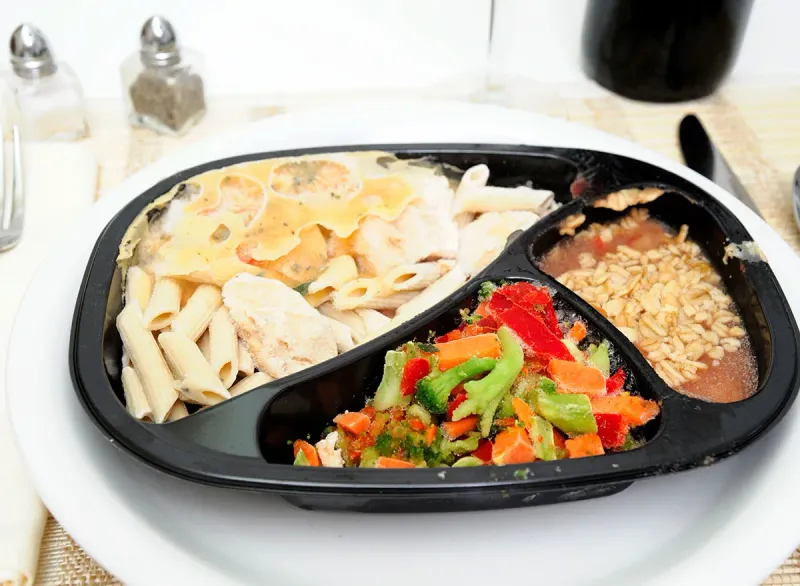
Microwaveable meals save time but sacrifice nutrition with their excessive sodium content—often more than half your daily recommended intake in a single serving! This sodium overload contributes to high blood pressure and increased heart disease risk. Ultra-processing removes nutrients while adding preservatives, artificial flavors, and unhealthy fats.
The vegetables included are typically minimal and overcooked, losing much of their nutritional value during manufacturing. Portions typically leave you unsatisfied, leading to additional snacking later. Batch cooking whole foods on weekends provides healthier grab-and-go options for busy days. If you must use frozen meals, look for those with under 500mg sodium, at least 5g fiber, and ingredient lists featuring recognizable foods.
19. Instant Ramen
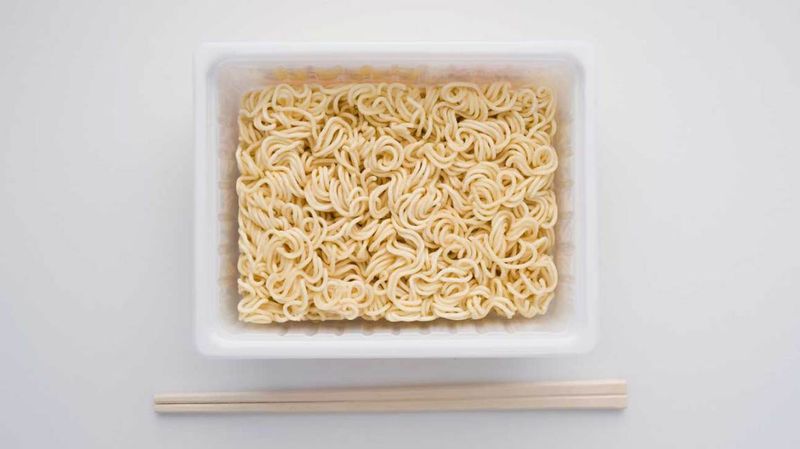
Those cheap noodle packages might save money but cost your health dearly. A single serving contains nearly two days’ worth of sodium, contributing to high blood pressure and water retention. The noodles undergo deep-frying during manufacturing, leaving them saturated with unhealthy oils before they even reach your pot. The flavor packets contain MSG and artificial ingredients that may trigger headaches and discomfort in sensitive individuals. Virtually devoid of fiber, protein, or beneficial nutrients, these meals leave you hungry again soon after eating. For quick meals, try quick-cooking whole grain options like quinoa with vegetables and a simple protein source for a meal that truly satisfies and nourishes.
20. Store-Bought Frosting
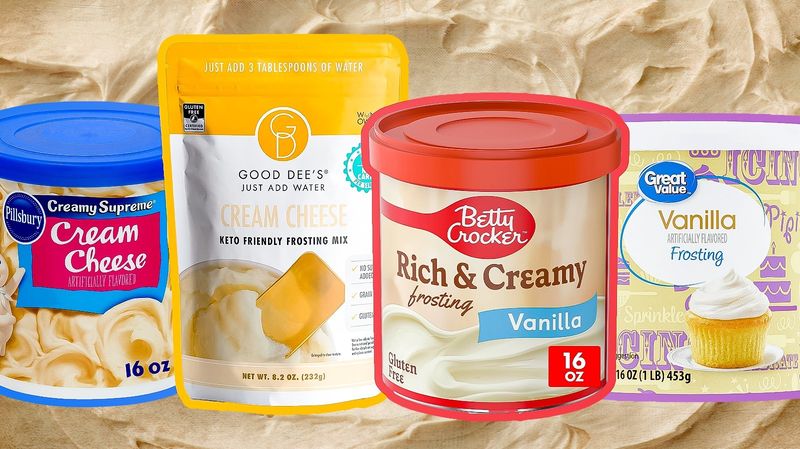
Convenient tubs of frosting hide a concerning reality beneath their sweet exterior. Many contain partially hydrogenated oils—a source of harmful trans fats linked to heart disease and inflammation—despite label claims suggesting otherwise. Artificial colors derived from petroleum products have been associated with behavioral issues in children.
The sugar content is staggering, with just two tablespoons containing more than the recommended daily limit for added sugars. Making simple homemade alternatives with butter, powdered sugar, and natural flavorings gives you control over ingredients. You can also try Greek yogurt-based toppings or whipped ricotta with a touch of honey for healthier options that still satisfy your sweet tooth without the chemical aftermath.
21. Energy Drinks

Marketed as performance enhancers, energy drinks deliver a dangerous combination of stimulants that overwork your heart. The caffeine content often exceeds that of three cups of coffee, leading to increased heart rate, anxiety, and sleep disruption. Sugar content rivals or exceeds soda, contributing to insulin resistance and weight gain.
The blend of synthetic caffeine, guarana, taurine, and other stimulants hasn’t been thoroughly studied for long-term safety. Regular consumption has been linked to heart rhythm disturbances and even sudden cardiac events in otherwise healthy people. For natural energy, prioritize quality sleep, regular physical activity, and balanced nutrition. If you need a boost, green tea provides caffeine with beneficial antioxidants in a more moderate, natural package.
22. Candy

Colorful and tempting, candy delivers a concentrated dose of refined sugar with zero redeeming nutritional qualities. The rapid sugar absorption causes dramatic blood sugar spikes followed by crashes that leave you feeling tired and craving more sweets. Artificial colors and flavors have been linked to behavioral issues, especially in children. Regular consumption contributes to dental decay as sugar feeds harmful bacteria in your mouth. Many varieties also contain unhealthy fats that contribute to inflammation. Satisfy sweet cravings with nature’s candy instead—fresh or dried fruits provide natural sweetness along with fiber, vitamins and minerals that benefit your body rather than just stimulating your taste buds.
Leave a comment